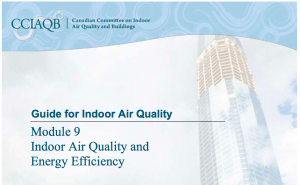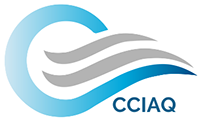As the winter chill blankets Canada in January, the focus inevitably turns towards creating warm and comfortable indoor environments. However, the pursuit of coziness should not compromise the quality of the air we breathe, especially in the workplace. Indoor air quality (IAQ) becomes paramount, impacting both employee well-being and overall productivity.
Cold Weather, Sealed Spaces: The IAQ Conundrum
The instinct to keep the cold out often leads to tightly sealed buildings, reducing ventilation. While this helps maintain warmth, it also concentrates indoor pollutants. Module 9 of the CCIAQ’s Guide for Indoor Air Quality offers recommendations for maintaining IAQ in buildings that use methods and systems to reduce energy use, highlighting the interdependence of IAQ and energy efficiency.

Heating Systems and IAQ Challenges
The reliance on heating systems intensifies during January in Canada. Whether it’s forced-air heating, radiant systems, or electric heaters, these systems can introduce dry air, leading to discomfort and potential health issues. Module 9 provides strategies for optimizing heating, ventilation, and air conditioning equipment to ensure energy efficiency without compromising IAQ.
Winter Allergens: A Hidden Culprit
While many associate allergies with spring, winter brings its own set of triggers. Module 9 considers the effects of the need for cost efficiency and occupant comfort, emphasizing the importance of adapting existing building practices and conducting IAQ profiles and audits.
Outdoor Air Quality Influencing Indoors
The quality of outdoor air in January can significantly impact indoor environments. Module 9 recommends strategies for managing the building’s interior and exterior environments, such as through specific maintenance and renovation practices. Understanding and addressing these external factors are key to maintaining optimal IAQ.
Employee Well-being and Productivity: A Direct Link
Numerous studies highlight the direct correlation between IAQ and employee health and productivity. Module 9 concludes with recommendations on adapting existing building practices, such as IAQ profiles and audits, occupancy, budgeting, and replacement of equipment.
Strategies for Improving IAQ in January
- Regular Ventilation Checks: Ensure that ventilation systems are operating efficiently, providing a steady influx of fresh air.
- Humidity Control: Maintain optimal humidity levels to prevent dry air issues and respiratory discomfort.
- Indoor Plants: Introduce greenery to act as natural air purifiers, combating common indoor pollutants.
- Regular Cleaning: Implement a thorough cleaning routine to minimize dust, allergens, and mold.
- Energy Efficiency Integration: Incorporate strategies from Module 9, understanding air supply and delivery concepts, optimizing HVAC systems, managing the building’s environment, and monitoring and evaluating building performance.
The Role of Employers and Building Managers
Employers and building managers play a pivotal role in maintaining healthy IAQ. Module 9 provides recommendations on communication with building occupants, emphasizing the importance of adapting practices for energy efficiency and IAQ in tandem.
A Breath of Fresh Air, Even in January
Navigating the challenges of indoor air quality during the Canadian winter requires a proactive and informed approach. By addressing the unique factors that January brings – from heating systems to winter allergens – workplaces can create environments that not only shield against the cold but also foster the well-being and productivity of their occupants. As we embark on the frosty month of January, let’s ensure that the air inside our workplaces is as refreshing as the winter air outside. Download Module 9 for a deeper dive into harmonizing IAQ and energy efficiency: Module 9 – Indoor Air Quality and Energy Efficiency.

